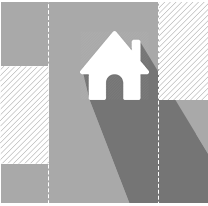Rainwater catchment area
A catchment area will almost always consist of a rooftop. Rooftops made from any material can be used to collect rainwater for non-potable use (anything except for drinking or bathing). The best rooftop material for collecting rainwater for potable use is galvanized steel or aluminum with a factory sealed coating. Copper and raw galvanized steel should not be used for potable due to the release of heavy metals into the water. Clay and concrete are OK for potable but less desirable because they hold dirt and absorb water. Asphalt shingles should not be used for potable systems because they can leach hydrocarbons.

